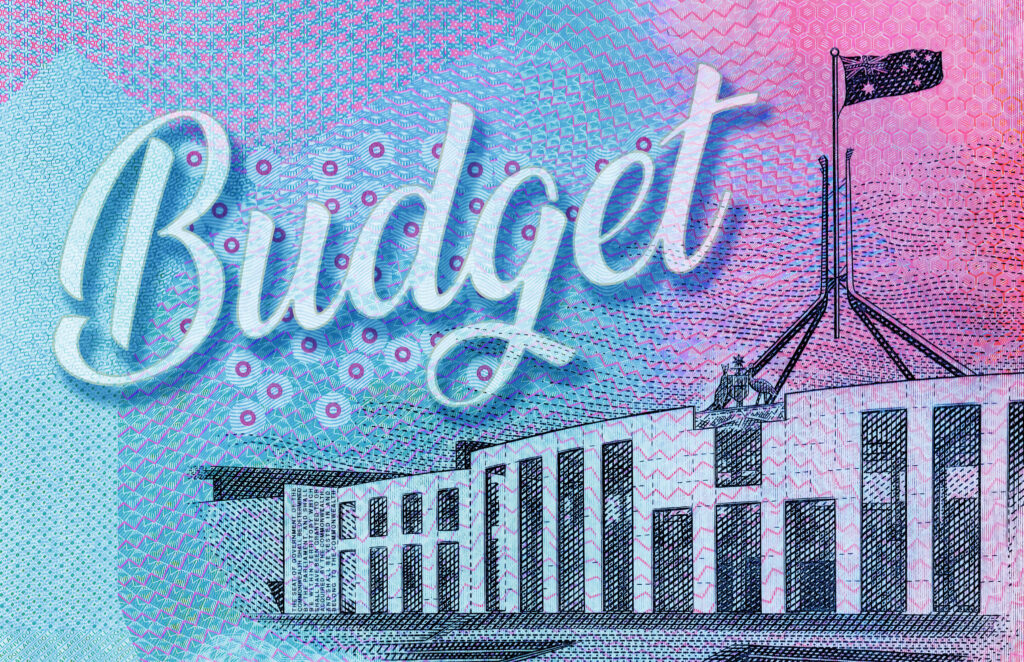Headline CPI rose to 3.2% in the September quarter, up from 2.1% in June, the highest quarterly rise in more than two years.
News of the higher-than-expected inflation numbers was followed by the biggest daily fall in the Australian share market in two months. Wall Street ended the month subdued with mixed results over concerns about no further rate cuts this year but optimism about US-China relations after a positive meeting between the leaders.
The lift in inflation appears to have rattled consumers. The Westpac–Melbourne Institute Consumer Sentiment Index fell 3.5% in October, adding up to a 6.5% drop in the past two months after gains between May and August when rate cuts were giving a boost.
The Aussie dollar strengthened by the end of the month, closing at US65.4c, making up some of the last ground of the previous fortnight.
Unemployment rose to 4.5% in September, the highest in nearly four years.

Market movements and review video – November 2025
Stay up to date with what’s happened in the Australian economy and markets over the past month.
Australia’s economy remained under pressure in October. Investors sharply pared back future rate-cut bets after inflation data came in higher than expected.
News of the higher-than-expected inflation numbers was followed by the biggest daily fall in the Australian share market in two months.
Wall Street ended the month subdued over suggestions of no further rate cuts expected this year but there was some optimism about US-China relations.
Click the video below to view our update.
Please get in touch if you’d like assistance with your personal financial situation.

Super tax shake up
Superannuation tax rules are changing again and there are implications for those with very large balances as well as those on lower incomes.
In a nutshell, the new plans include:
-
more targeted tax rules for people with very large super balances
-
extra support for low-income earners who contribute to super
-
indexation (automatic increases) to make sure the tax thresholds keep up with inflation
-
the removal of the proposed tax on unrealised gains
The new super tax rules will begin on 1 July 2026 and will be based on your total super balance as at 30 June 2027.
The changes follow feedback from industry groups, financial experts, and the public. Treasurer Jim Chalmers said the updates are designed to make the system fairer while still meeting the government’s goals.i
New rules for higher balances
If your total super balance (TSB) is more than $3 million, you’ll be affected by new tax rates on earnings.
Here’s how it works:
-
for balances between $3 million and $10 million, earnings will be taxed at 30 per cent instead of the usual 15 per cent for the proportion of earnings between the thresholds
-
for balances over $10 million, a tax of 40 per cent will apply on the proportion of earnings over the threshold
These are still concessional rates, meaning they’re lower than the top personal income tax rate, but they’re higher than the standard super tax rate.
The thresholds will be indexed over time. The $3 million threshold will increase in steps of $150,000 while the $10 million threshold will increase by $500,000 each time.
This means fewer people will be affected in the future as the thresholds rise with inflation.
Only a small number of Australians will be affected by the new rules. Less than 0.5 per cent of super account holders are expected to have balances exceeding $3 million in the 2026-27 financial year. The $10 million rule is expected to apply to fewer than 8,000 accounts, less than 0.1 per cent of all super accounts.ii
If you’re affected, you can choose to pay the tax from your super account or from funds outside of super.
No tax on unrealised gains
One of the most controversial parts of the original proposal was a tax on unrealised gains, meaning increases in the value of assets that haven’t been sold yet (such as property or shares).
This idea has now been dropped.
Instead, the new tax will only apply to realised gains (actual earnings such as interest, dividends or profits from selling assets).
Extra top-up for low income earners
The government is increasing support for low-income earners through the Low Income Superannuation Tax Offset (LISTO).iii
LISTO is a 15 per cent tax offset paid by the government into the super accounts of people earning up to $37,000 a year and is worth up to a maximum of $500.
From 1 July 2027, the current LISTO income threshold will increase to $45,000 to match the top of the second income tax bracket. Around 3.1 million Australians will then be eligible for LISTO.
The maximum government top-up payment will also be increased from $500 to $810 to account for the recent increase in the Superannuation Guarantee (SG) rate to 12 per cent.
Special rules for defined benefits funds
Some judges and politicians are members of defined benefit super funds, which work differently from regular super accounts.iv
Because it’s harder to calculate earnings in these funds, the government will develop equivalent arrangements to apply the new tax fairly.
We’re here to help you understand how the changes may affect your super and your long-term financial goals, so please give us a call.
i Reforms to support low-income workers and build a stronger super system | Treasury Ministers
iii Low Income Superannuation Tax Offset | Treasury.gov.au

Spouse super contributions
Ways of contributing to your spouse’s super
There are 2 ways of contributing to your spouse’s super:
-
You may be able to split contributions you have already made to your own super, by rolling them over to your spouse’s super – known as a contributions-splitting super benefit.
-
You can make a super contribution directly to your spouse’s super, treated as their non-concessional contribution, which may entitle you to a tax offset.
Splitting your contributions with your spouse
Some super funds allow you to split your contributions with your spouse.
When and how to apply
You can generally apply to split your contributions with your spouse after the end of the income year in which your contributions were made.
You apply to your fund to split your employer contributions and personal concessional contributions made during the previous income year, using the Superannuation contributions splitting application (NAT 15237) or similar form provided by your fund. The fund has the discretion to allow or not allow the request.
There are restrictions on the type and amount of contributions you can split.
If you’re planning to split any part of your contributions with your spouse but you also want to claim a tax deduction for them, you must give your fund the notice of intent to claim a deduction before applying to split the contributions.
How split contributions are treated and reported
A contribution split with your spouse is called a ‘contributions-splitting super benefit’ and is treated as a rollover to your spouse, not a new contribution for them.
Accordingly, splitting your contributions with your spouse does not reduce the total contributions made for you or change their characteristics for the purposes of your contributions caps. For example, if you make a personal contribution and claim a tax deduction for it, that will count towards your concessional contributions cap for the year even if you then split and roll it over to your spouse. It will not count towards your spouse’s cap.
Tax offset for super contributions on behalf of your spouse
You may be able to claim a tax offset of up to $540 per year if you make a super contribution on behalf of your spouse (married or de facto) if their income is below $40,000.
Contributions you make to your spouse’s super are treated as their non-concessional contributions, whether or not you’re eligible for the super tax offset.
General eligibility conditions
To be eligible:
-
the contribution must be made to either a complying super fund or an approved retirement savings account (RSA)
-
both you and your spouse must be Australian residents when the contribution is made
-
the contribution is not deductible by you
-
you and your spouse must not be living separately and apart on a permanent basis when making the contribution.
Specific eligibility conditions
You’re eligible for a tax offset for a contribution made on behalf of your spouse if:
-
their income is less than $40,000 in the income year in which the contribution is made, calculated as the sum of their:
-
assessable income (disregarding any amount released to your spouse under the first home super saver scheme)
-
total reportable fringe benefits amounts
-
total reportable employer super contributions
-
-
your spouse did not exceed their non-concessional contributions cap in the income year in which the contribution is made
-
your spouse had a total super balance less than the general transfer balance cap immediately before the start of the income year in which the contribution is made
-
for the 2020–21 and later income years, your spouse was under 75 years old when the contributions are made
-
for income years before 2020–21, your spouse was under 70 years old when the contributions were made.
Offset amount
The tax offset amount reduces when your spouse’s income is greater than $37,000 and completely phases out when your spouse’s income reaches $40,000. The tax offset is calculated as 18% of the lesser of:
-
$3,000 minus the amount by which your spouse’s income exceeds $37,000
-
the sum of your spouse contributions in the income year.
The tax offset for eligible spouse contributions can’t be claimed for super contributions that you made to your own fund, then split to your spouse. That is a rollover or transfer, not a contribution.
Example: eligibility for the tax offset for super contributions on behalf of your spouse
Robert and Judy are spouses. Robert earns $19,000 in 2018–19 and Judy makes a $3,500 contribution to Robert’s super fund.
Robert and Judy meet the eligibility requirements to claim a tax offset. Judy can claim a tax offset in her 2018–19 tax return for the contributions she makes to Robert’s super fund.
The tax offset is calculated as 18% of the lesser of:
-
$3,000 minus the amount over $37,000 that Robert earned (in this case, nil)
-
the value of the spouse contributions (in this case, $3,500).
Judy can claim a tax offset of $540, being 18% of $3,000.
Example: eligibility for a part tax offset for super contributions on behalf of your spouse
Carmel and Adam are married and living together. Carmel is 46 years old and her income is $38,000 per year. Carmel has not exceeded her non-concessional contributions cap for the income year, and her total super balance is under $1.6 million.
Adam wishes to make a super contribution of $3,000, on Carmel’s behalf, to her complying super fund.
Carmel’s income is under the threshold. Adam is eligible for a tax offset. As Carmel earns more than $37,000 per year, Adam will not receive the maximum tax offset of $540. Instead, his entitlement is 18% of the lesser of:
-
$3,000 reduced by every dollar over $37,000 that Carmel earns
-
the value of spouse contributions.
Carmel earns $1,000 over the $37,000 income threshold. Adam’s tax offset is $360. This is calculated as 18% of $2,000 ($3,000 reduced by the $1,000 that Carmel earned over the $37,000 income threshold).
If you have any questions regarding this article, contact us today.
Source: ato.gov.au
Reproduced with the permission of the Australian Tax Office. This article was originally published onhttps://www.ato.gov.au/individuals-and-families/super-for-individuals-and-families/super/growing-and-keeping-track-of-your-super/how-to-save-more-in-your-super/spouse-super-contributions
Important:
This provides general information and hasn’t taken your circumstances into account. It’s important to consider your particular circumstances before deciding what’s right for you. Although the information is from sources considered reliable, we do not guarantee that it is accurate or complete. You should not rely upon it and should seek qualified advice before making any investment decision. Except where liability under any statute cannot be excluded, we do not accept any liability (whether under contract, tort or otherwise) for any resulting loss or damage of the reader or any other person.
Any information provided by the author detailed above is separate and external to our business and our Licensee. Neither our business nor our Licensee takes any responsibility for any action or any service provided by the author. Any links have been provided with permission for information purposes only and will take you to external websites, which are not connected to our company in any way. Note: Our company does not endorse and is not responsible for the accuracy of the contents/information contained within the linked site(s) accessible from this page.




